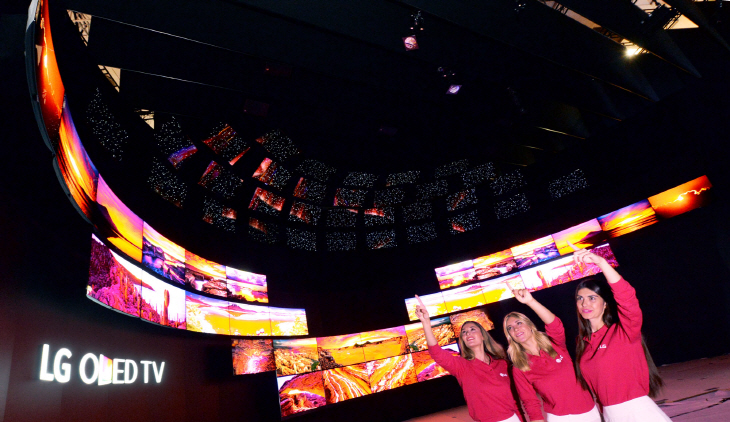Commercial production is scheduled to start in 2018 or 2019.

OLED inkjet printing technology is to jet red, green, and blue inks through a nozzle to stack a matrix of RGB OLED cells on TFT, or thin film transistor backplane.
Compared with today’s CVD, chemical vapor deposition technology that LG uses to produce WOLED or white OLEDs, the inkjet printing is more cost-effective because it wastes just 20% of the materials. The CVD wastes 70% of the materials.
It also comes built with no sheets of RGB color filter. More importantly, it is an indispensable technology in fabricating 60-inch and larger OLED panels with high yield. The above 60-inch TV market is the most coveted and profitable market segment. .
Key to rapid adoption of the OLED into the above 60-inch TV market is how fast to cut production costs to match those of LCDs. OLED panels outmaneuver LCD counterparts in terms of color gamut, pixel switching time, picture quality, and viewing angle, but have yet to replace them in large volume because they are still expensive luxuries.
Low yield –the ratio between sellable and total production – are blamed the most for the prohibitively expensive production costs.
The competition between OLEDs and LCDs is now centered on who will win in the 60 inch and larger TV market, as demand for TVs is shifting toward large-size 4k UHD TVs. The race is also where Korean and Chinese panel makers are betting for control of the future TV markets.
TCL of China is reportedly working hard to develop large-size, ink-jet printing OLED panels

